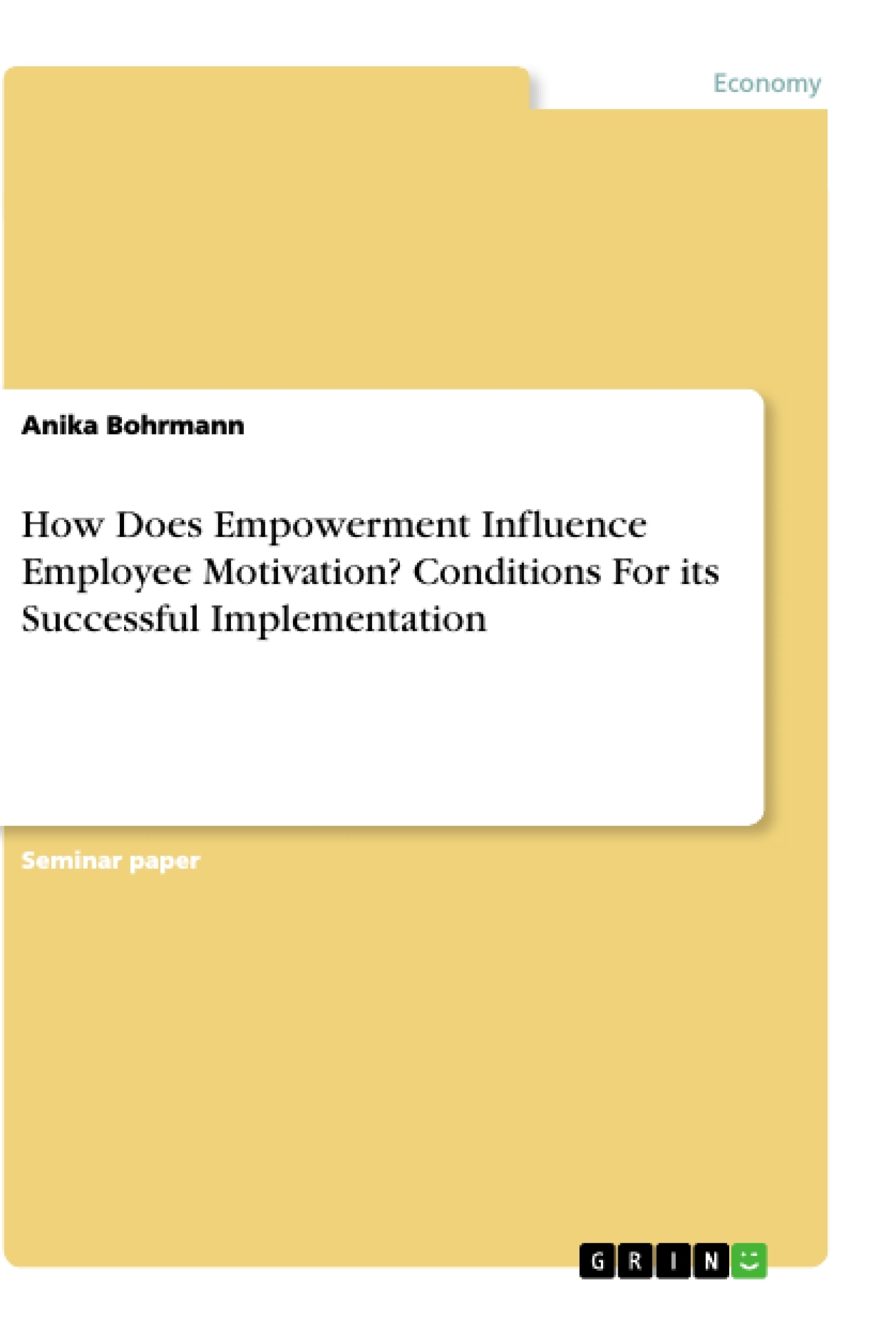In this paper, the author analyzes the conditions for the implementation of employee motivation through empowerment by scrutinizing the possible ways of interaction between superiors and subordinates and the boundary contingencies as contributory factors in job satisfaction. Stretching the bow from the definition of core terms of investigation to leadership tools, styles and principles, she outlines the organizational set-up which shall enhance the successful empowerment processes. She argues that empowerment must come from a cooperative leadership style which accounts for delegation, mutual trust and communication and therefore increases the likelihood for employee satisfaction. She will show that empowerment constitutes a sufficient condition for employee motivation and evokes the creation of new forms of interaction. Leadership has a key role to play in employee satisfaction and can be wisely used to serve both individual contentedness and organizational objectives.
The matter of motivation and volition are two powerful starting points of contemporary leadership research. For bosses, leaders and superiors, it has always been a crucial question to identify employees’ motives and manage their translation into driving forces being beneficial to the conduct of business.There is strong evidence that empowering employees will increase their motivation considerably and hence contribute to overall improved organizational productivity. The implementation of employee motivation - as well as a fundamental understanding of individual behavioral patterns - seem to be the universal keys to individual progress and organizational efficiency.
Inhaltsverzeichnis (Table of Contents)
- Introduction
- Empowerment in management and leadership
- Motivational theories
- The implementation of motivation through empowerment
- Successful leadership
- Conclusion
Zielsetzung und Themenschwerpunkte (Objectives and Key Themes)
This paper examines the relationship between employee empowerment and motivation, analyzing the conditions for implementing motivation through empowerment. It aims to understand how empowering employees can increase their motivation and contribute to improved organizational productivity.
- The impact of empowerment on employee motivation
- The role of leadership in fostering empowerment
- The connection between empowerment and job satisfaction
- The different approaches to empowerment (structural and psychological)
- The importance of understanding individual needs and motivations
Zusammenfassung der Kapitel (Chapter Summaries)
- Introduction: This chapter sets the stage for the research by introducing the key concepts of motivation and empowerment. It highlights the importance of employee motivation in the context of leadership and organizational performance.
- Empowerment in management and leadership: This chapter delves into the definition of empowerment and explores its historical roots. It discusses the various perspectives on empowerment, including its implications for employee relationships, organizational structures, and individual needs.
- Motivational theories: This chapter explores various motivational theories that influence employee behavior and performance. It examines the role of individual goals, beliefs, and needs in driving motivation.
Schlüsselwörter (Keywords)
Employee motivation, empowerment, leadership, job satisfaction, organizational structure, psychological empowerment, structural empowerment, motivational theories, individual needs.
- Quote paper
- Anika Bohrmann (Author), 2020, How Does Empowerment Influence Employee Motivation? Conditions For its Successful Implementation, Munich, GRIN Verlag, https://www.grin.com/document/913581




